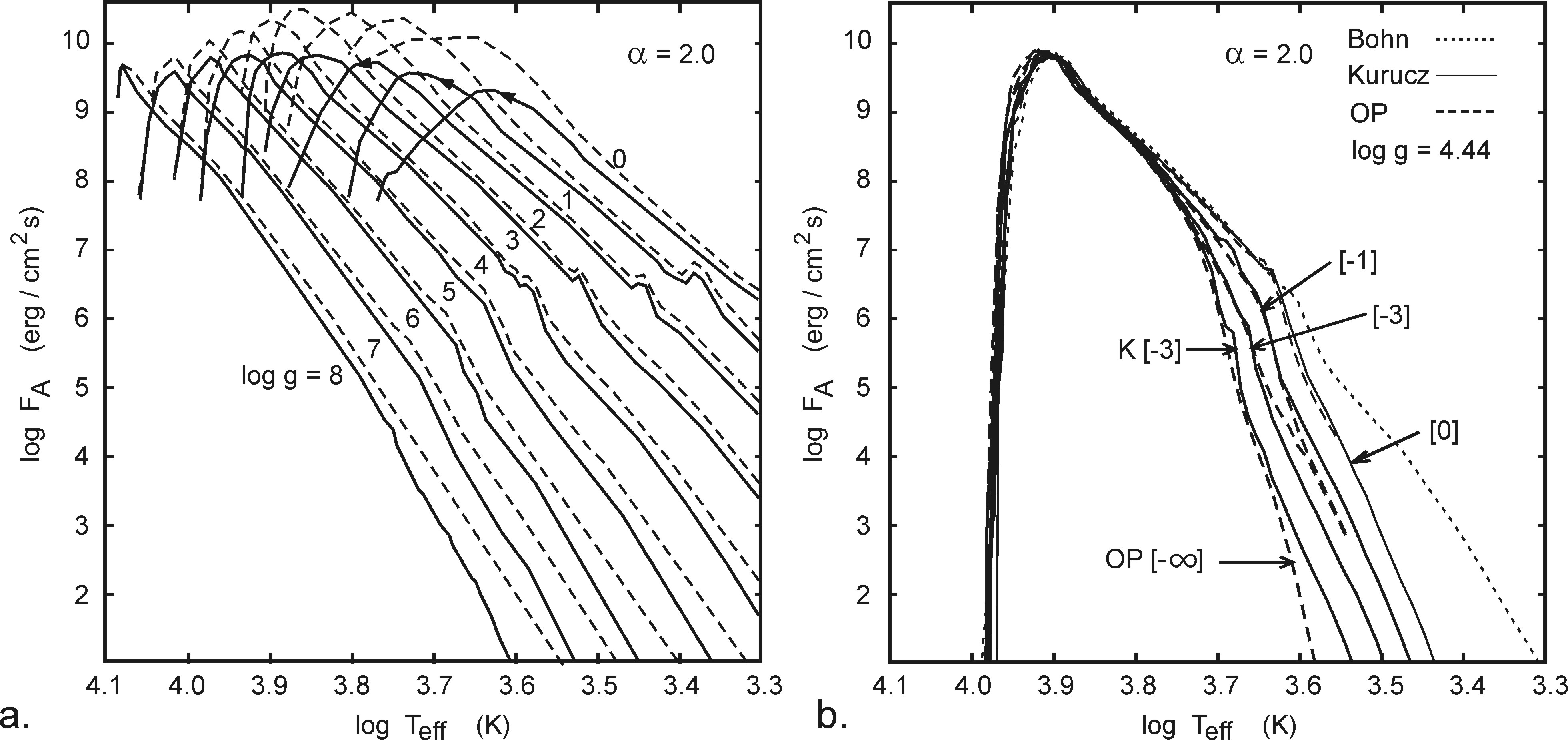
For the computation of acoustic wave energy, rotation is unimportant since the convection zones are not affected much by rotation. This is different for the magnetic field generation and therefore magnetic heating, where because of the dynamo mechanism the coverage of the star by magnetic fields depends on the parameter P_{Rot}. Figure 1 shows the computed acoustic wave energy fluxes F_A on basis of convection zone models for stars where the parameters Z_M, T_{eff} and g are varied (Ulmschneider, Theurer & Musielak 1996, Ulmschneider et al. 1999). Figure 1a, where Z_M is held to solar values, shows that F_A varies enormously with T_{eff} and g. This is due to the very high dependence of the velocity of the convective gas bubbles with T_{eff} and g in the convection zones. Holding the surface gravity g to typical values for main sequence stars, Fig.~1b shows how acoustic fluxes vary with T_{eff} and different metal abundances of 1/1, 1/10, 1/100 and 1/1000 solar metallicity (Z_M=[0], [-1], [-2], [-3]). For cool stars the drop of F_A is explained by the fact that the decreasing metal abundance decreases the opacity which allows the stellar surface (from where the main body of the stellar radiation escapes) to occur at deeper layers in the star where the convective velocities are much smaller. For hotter stars this effect is decreased or absent because the opacity there is mainly due to hydrogen and not to metals, it is therefore insensitive to variations of Z_M.

Fig. 1 Acoustic wave fluxes for main sequence and giant stars of solar abundance (left panel), after Ulmschneider, Theurer & Musielak (1996), as well as acoustic wave energy fluxes with non-solar metallicities (right panel), after Ulmschneider et al. (1999)


